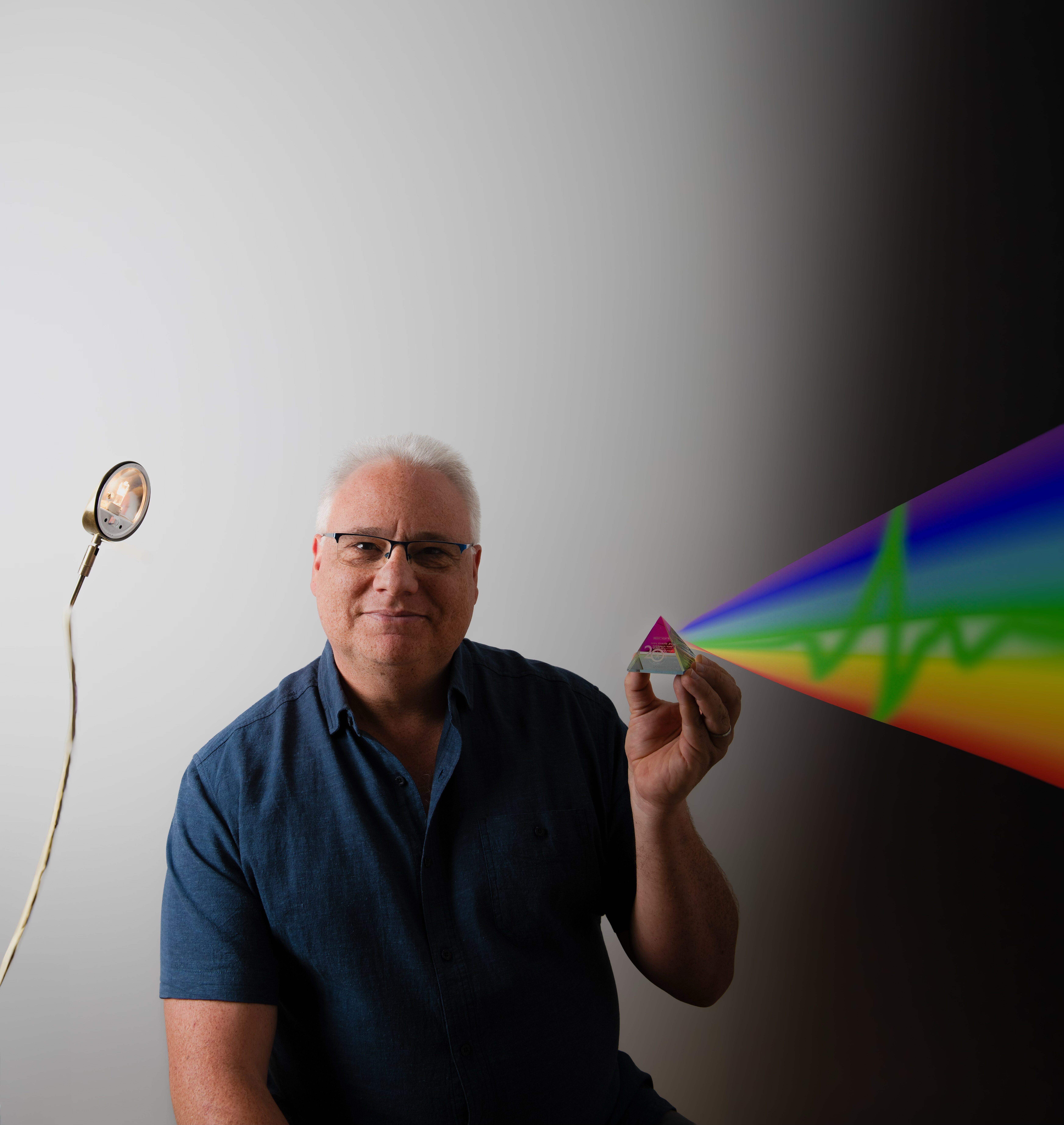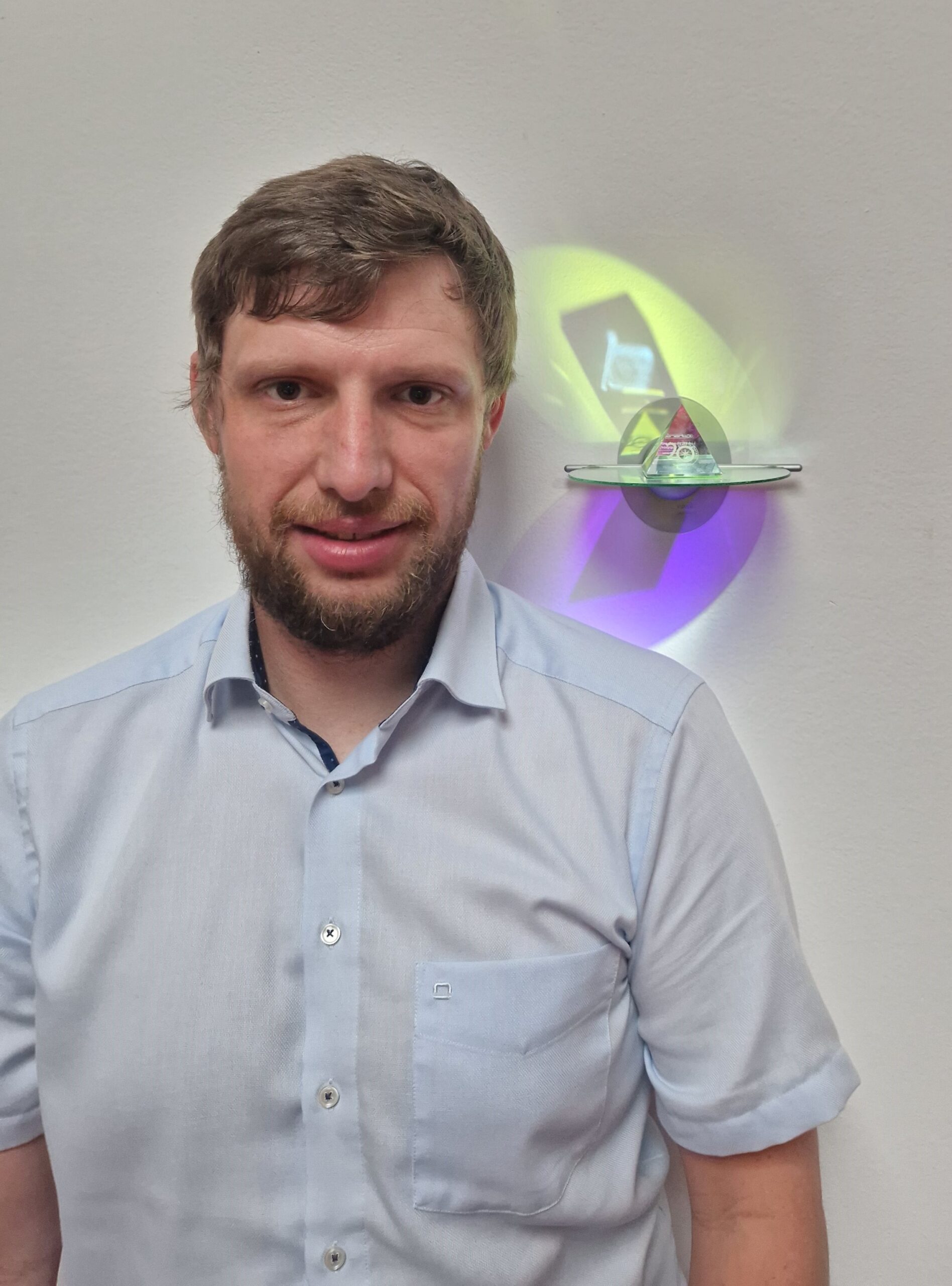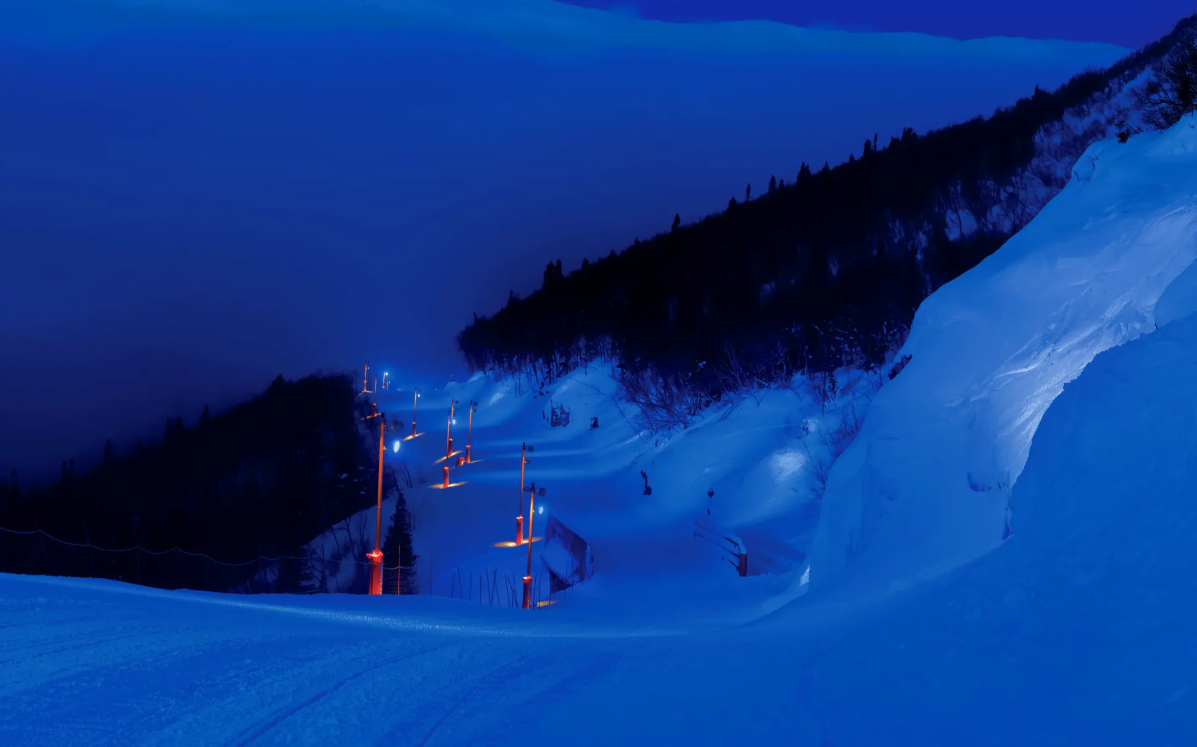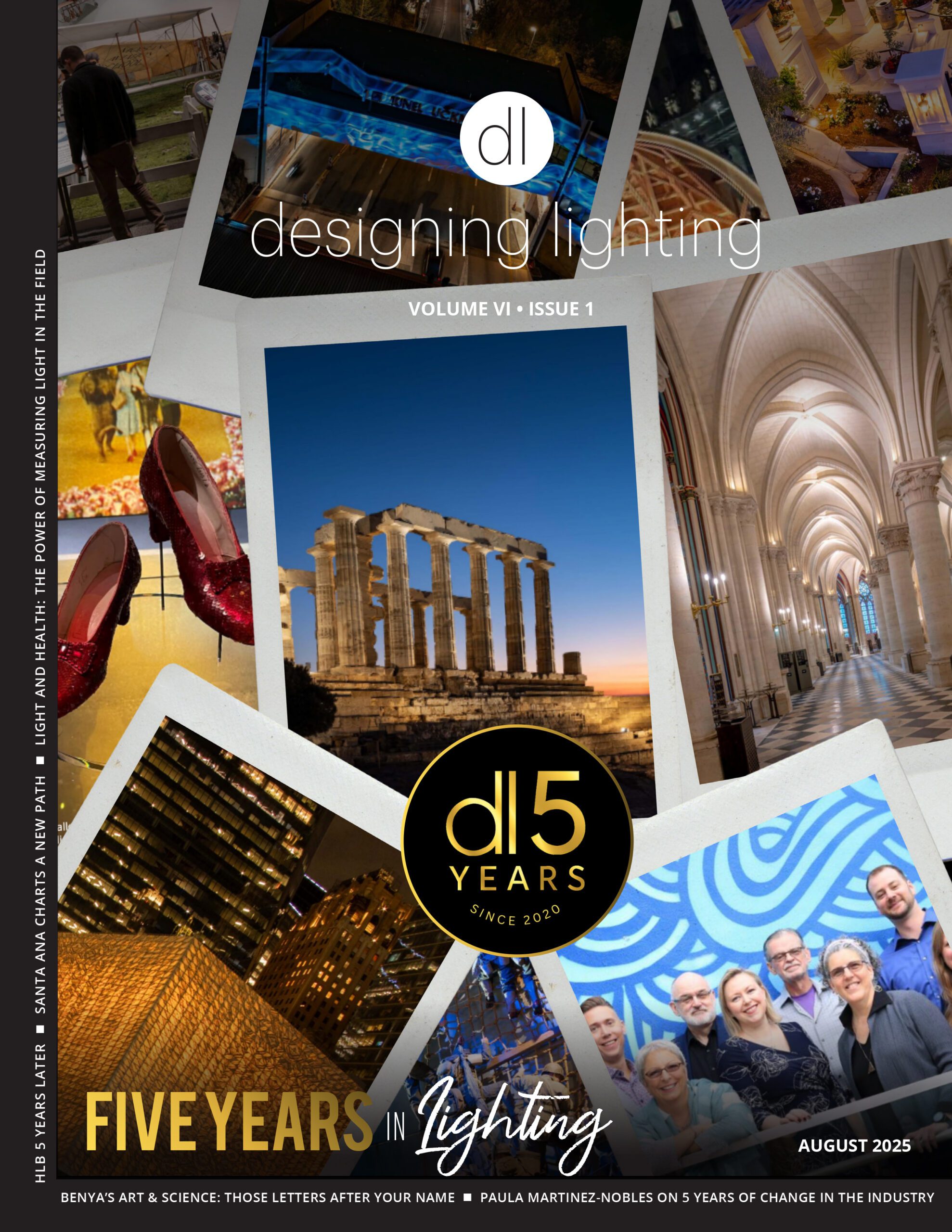20th anniversary campaign continues with the release of four new podcast episodes looking at various aspects of Design
As part of Pharos Architectural Controls’ year-long 20th anniversary celebrations, the controls manufacturer has released a new crop of podcast episodes, featuring people and projects that have pushed the limits of design through its product capabilities – on projects around the globe.
The ‘20 Years of Pharos’ campaign is spotlighting ten lighting professionals and ten projects that have shaped the success of the company over the two decades since its creation.
This part of the series sees leading lighting figures (and system designers) Robert Bell from Pathway Connectivity and Lukas Gössling from LightLife offering their insights and experiences of working with Pharos on landmark projects.
Pharos also spoke to Rutger van Dijk from SeMika BV about his involvement with the groundbreaking lighting scheme within the Naturalis Biodiversity Centre in The Netherlands, and Oscar Bartenius from Stockholm Lighting Company, on the transformation of the Åre Ski Resort in Sweden.
The interviews focus on how Pharos products helped to shape the design of both systems and aesthetics in order to bring landmark lighting schemes to life.

Robert Bell – Pathway Connectivity
As one for forebearers of the lighting industry, Robert has over 40 years of experience and has not only witnessed – but often played a part in – the evolution of the world of lighting to the present day.
In 1992, Robert had left the Canadian Broadcasting Corporation to push forward his lighting software programme – wysiwyg. “AutoCAD was big in architecture but everyone else was using nothing more than a pencil at that time. I was writing software to augment AutoCAD, to do lighting plans, and when 3D AutoCAD came out, that was the genesis of my software.
He explains that – in his quest for investment in his idea – he contacted Tom Thorne, of Flying Pig. “I’d been watching what the Whole Hog had been doing to revolutionise the lighting industry, and then fellow Flying Pig co-founder Nils Thorjussen picked up my letter and booked a flight to meet me in Toronto.
“These are the days when DMX was just starting to explode. The blue LED had been invented but it would be another five years before it came to market, so we are predating how the whole lighting industry looks today. When Nils came to meet me, he had just finished shooting Lenny Kravitz’s incredible music video, Are You Gonna Go My Way. They used the Whole Hog as that was the only controller that could control six universes of DMX. Major ground had been broken on that project.”
The size of lighting rigs were becoming huge, with delineated lights themselves as visuals.
“There wasn’t an easy way to create dramatic lighting but the RGB LED meant that everything had to change. When Richard Mead and Nick Archdale, left Flying Pig, they disappeared for a while and re-entered the market with the Pharos LPC: a tiny box when compared to the gargantuan consoles he had built in the past. When I saw the software behind the LPC and understood that it was designed specifically to control LEDs, I was excited. This was something new and significant. When you reset and see what Pharos was doing, they certainly identified a niche in the market.”
Robert’s experience continued to grow as he witnessed – and quickly began using – Pharos controls on projects. When the commercial and industrial lighting company Acuity Brands acquired Horizon Controls in 2011, they were starting their own white light LEDification. Six months later, they purchased Pathway Connectivity, which is where Robert works today.
As well as witnessing the LEDification of the industry, Robert has also been heavily involved with writing technical standards and ratifying DMX, RDM and streaming ACN, as a member of the Entertainment Services Technology Association (ESTA) working groups.
On his specific user experience with Pharos, Robert cites Niagara Falls as his most famous project example. “About seven years ago, The Falls were LEDified via a consortium of companies that created 2-degree LEDs that could shoot powerful beams over 1,500ft.
“The original control system has been superseded by Pharos – particularly as the Cloud connectivity gave us the remote monitoring and management we needed. Pathway Connectivity was one of the first manufacturers to become friends of Pharos, where we took clever code, written by the Carallon Group, and that code now lives within our products now too. Those products connect to Pharos Cloud.
“I can maintain and control everything from my phone and support the ground staff when there are problems – like when a raccoon decides to chew through the fibre. I can identify the source of the break and send someone in to fix it. Niagara Falls is such a massive palette and there are so many visitors that if the lights go out people call the police. It is very important to have the most up-time and the Pharos Cloud has been a godsend. I can say that in four years, we’ve had 100 per cent up-time on The Falls, which is fantastic.”

Lukas Gössling – LightLife
Lukas came into contact with Pharos in 2012, when systems integrator LightLife, became the distributor of Pharos products in German-speaking countries, from its base in Cologne. The Pharos/LightLife relationship continued to deepen, with shared office space and trade show stands uniting their individual strengths to work on projects. “One of the reasons we chose Pharos is that we know what we want to have from a control system – we sought that complex solution that was more than just a lighting plate. Our clients required an integrated solution that could meet the technical requirements they had.
“We have made the most of the show control elements and integration with other third-party systems, on projects all over the world. The distribution network here in Germany is strong but we really have been an international partner with Pharos, including the Dubai Canal project, which was one project that really sticks out.
“The dimensions of the project were significant: A three-kilometre stretch of water that required dynamic lighting – including three bridges that also required illumination. The project also required a wave effect created by the luminaires, which could not be done without the use of Pharos technology. We delivered the hardware and the skillset, but the collaboration with Pharos made it a huge success.”
Lukas also reflects on the German Telecom headquarters internal museum, which changes annually to refresh installations. “In 2016, the client wanted a complete refresh of the hardware and asked us for our advice on the best products available, so far as AV goes. They trusted our experience and we recommended Pharos, particularly for its scalability and future-proofing of the technology.
“We got to a point where we do our own scripting with Pharos but it is always good to lean on the tech support team to continue to push the boundaries of the technology. It’s always nice to meet the guys that are deep into the programming phase that are foreseeing the requirements, before the client does. That always feels good.”

Naturalis Biodiversity Centre
As one of the largest natural history museums in the world, the team behind Naturalis Biodiversity Centre wanted to bring to life some of the most innovative and interactive exhibits, utilising the best technology at their disposal. Rutger van Dijk and his firm SemMika BV was brought on board to coordinate the project – which was as large as it was ambitious.
Rutger had experience of working with Naturalis at their previous home but with the new building advancing and the team needing an experienced show control, lighting and AV specialist to help bring the vision for the exhibits to life, Rutger was brought in as technical designer.
“I was asked to design the AV systems in the exhibits and the lighting system, as well as being the project leader and programming the whole show. There were nine big exhibition halls – each with their own content designers, which meant that there were a lot of moving parts.
“There was also an overarching ICT system that had to dovetail with the exhibition control system that was designed by the museum team. They wanted to have control from there of every element – from projectors to speakers, but they found out that talking timelines, streaming ACN and DMX couldn’t be done with the system they had. To remedy this, each exhibition hall had a show controller that was all managed by their specially designed central management system, via UDP commands.”
Rutger recalls that some of the peculiarities of this project required him to seek help from the Pharos team: “When we came to linking up the controls and programming the Japanese Theatre exhibition hall, we realised that the set designer had included animatronic elements that were working on serial commands, without any controllers. I was at a loss as I tried to work out how I could get the DMX lighting controller to control serial commands, so I called Bas Hoksbergen, who wrote the perfect script to make everything work smoothly.
“All the halls had dynamic lighting, which mainly went to a Pharos system, but there were instances where designers had specified different protocols.”
Pharos products have not only become integral to the overarching museum system – the products have also helped bring to life what could be described as Naturalis’ most famous and popular exhibit: REXperience.
“The dark ride takes people back in time to meet the Tyrannosaurus Rex – the skeleton for which is also exhibited inside the museum. The 4-D experience allows visitors to enjoy a completely immersive experience that leaves a real lasting impression. In order to ensure the experience is seamless and of the highest quality, the show control had to be sequenced perfectly, from the timed open and closing of the ‘pod’ doors, to the vibration of the chairs and the AV. The show control capabilities of Pharos are easy to use, with all triggers found on one page. The system is also extremely reliable – once it is set and works correctly once, it never fails. The demands of the project were extremely complex, but Pharos kit – and the team behind – rose to the occasion with every demand that was made.”

Åre Ski Resort, Sweden
Pharos controls were utilised in a unique scheme to not only make one of Sweden’s most popular ski resorts accessible after dark, but to add some design flourishes that would give guests a real wow factor. Oscar Bartenius from Stockholm Lighting Company, explained how the project came to fruition:
“We were instructed by a lighting designer around 12 years ago to realise their vision to light up the entire ski slope, from the top of the mountain, down to the valley. This posed some significant challenges – both from a hardware and a controls perspective. Static lighting is commonplace but the use of dynamic lighting within the project really gave the resort some standout.
“During the dusk and twilight hours, static lighting is used to help illuminate the slopes, which also includes some Gobo projections to give lit points of interest. But when night falls and the slopes are not in use, the nighttime scenario is activated which includes a wave of blue and white light: The wave of movement slowly tracks from the top of the mountain to the bottom, which can be seen across the whole valley.”
Oscar explains that the system configuration to overcome the challenge of covering the distances needed. “The system consists of a fibre backbone to reach the distance – which spans a couple of miles of ski slope, with six distributed LPCs. The fibres come into a converter to each LPC unit, to utilise the distributed network. All the fixtures are DMX-controlled and the Pharos TPC acts as the user interface for the installation, which is really user-friendly for technicians to change scenarios and maintain the fixtures.
“Most of the day-to-day functions rely on astronomical triggers and we also have sensor inputs to the Pharos systems that tell us the health of the IP-rated electrical cabinets. These send out alert emails to the client to show any problems that need attending to, particularly when it comes to the temperature of the units, which need to be kept above 0 degrees. These fail-safes are great in maintaining the health of the overall system, which has been fantastic.”
Oscar explains that his team is currently making some updates to the system – which has been running seamlessly for 12 years. “We have updated the Pharos hardware with Designer 2 firmware and we’ve done some work on the programming side, but the transition has been really smooth. Everything has transitioned really well and all of the ‘old’ Pharos units are still working perfectly, which is testament to their quality.”
The full interviews can be viewed here.
Robert Bell: https://youtu.be/p_jJOkVKS8I
Lukas Gössling: https://youtu.be/rlGYu9JizYc
Rutger van Dijk, Naturalis: https://youtu.be/sXHiPt2k2h0
Oscar Bartenius, Åre Ski Resort: https://youtu.be/kduYN_SkVLA
The next installment of the ’20 years of Pharos’ podcast series, Pushing Boundaries, is due to be released later this summer.



